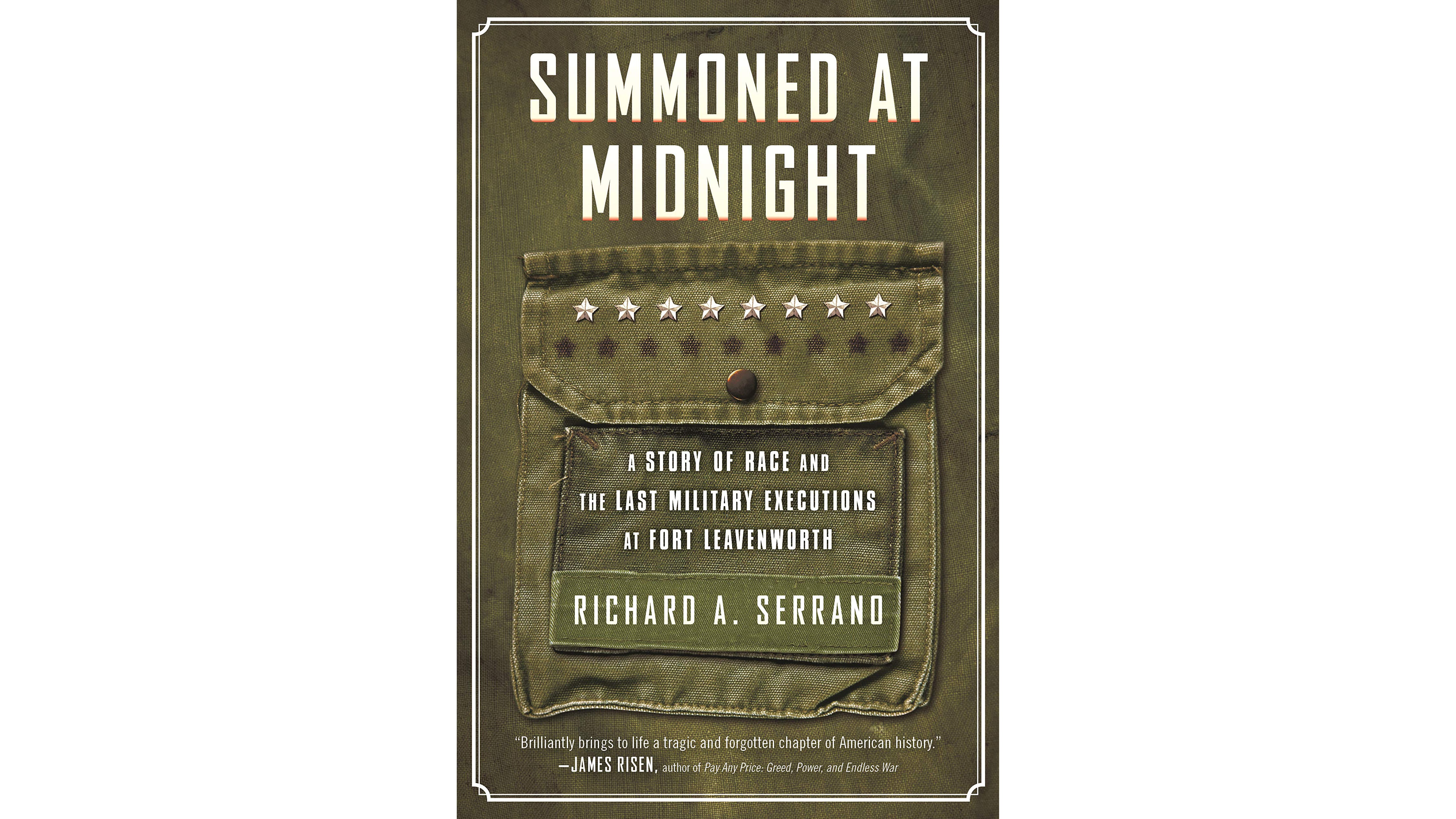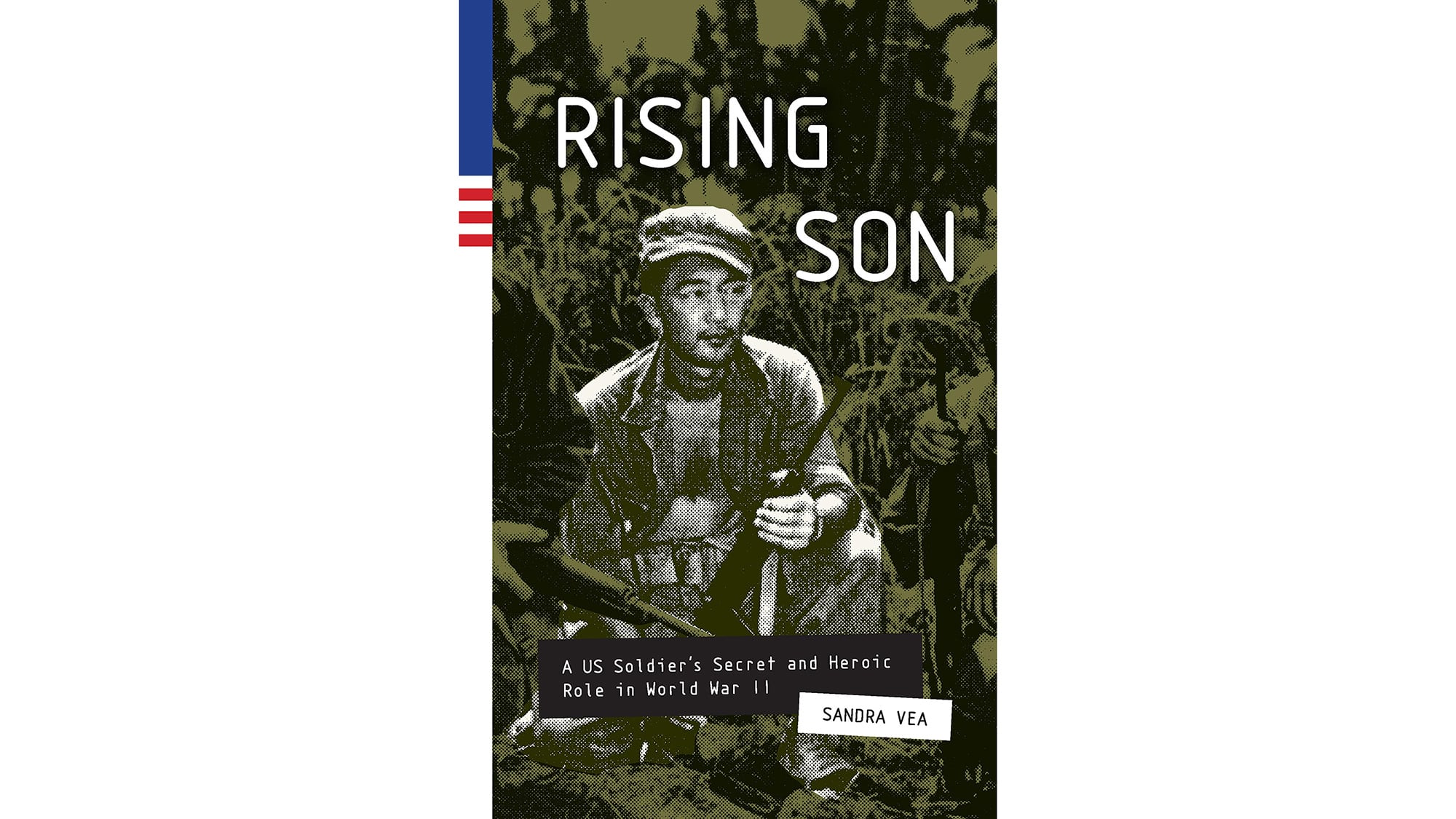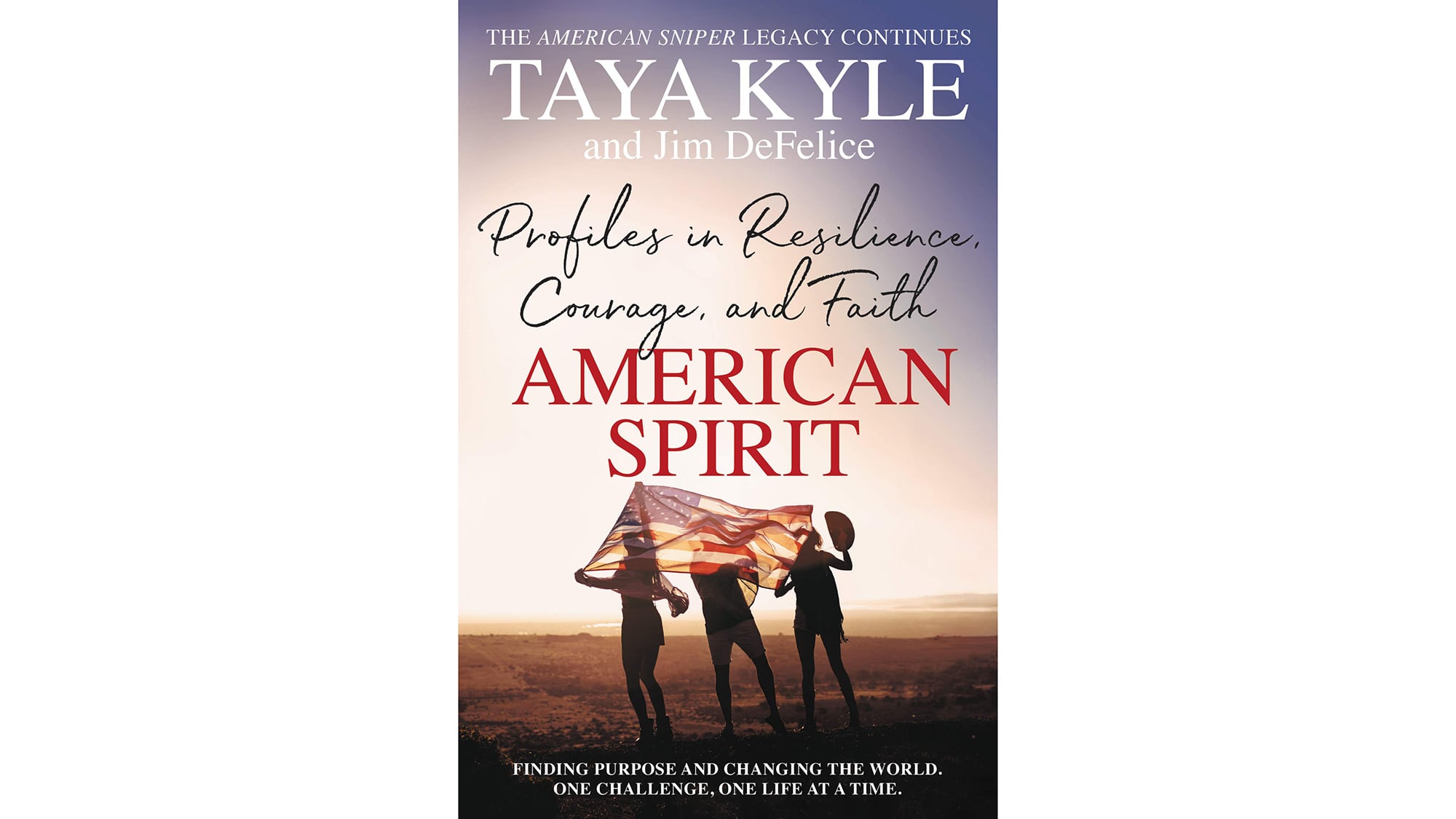Here are reviews of 22 nonfiction, fiction, and self-help books.
The books appear in order of satisfaction and merit. Prices are from publishers’ lists and might vary depending on the seller.
NONFICTION
“War Flower: My Life After Iraq” by Brooke King, Potomac, 280 pages, $29.
Pfc. Brooke King is testifying at the court-martial of the Army captain who is the father of her unborn twins.
The court reminds her that she is “not permitted to look at the accused,” but with temerity and tenderness she looks. She mouths “I love you” to him, and that’s “the first time I had said it.”
“War Flower” is full of such frank emotion and explicit intimacy, the story of an Iraq veteran whose perspective is alternately chilling and charming. She bares all, starting with the cover image that is an enlargement of her wrist tattoo with hash marks a publicist says tally “her seven confirmed kills.”
She is a war flower, a soldier who has “miraculously survived” war without a physical injury. Emotionally she is a wilted and “war torn,” what the Veterans Affairs department describes as “PTSD and some brain damage.”
“I was the sum total of my suffering made out in the form of a body.”

Fortunately for readers, she finds a way to sum up her feelings, including unflattering ones. Her book is welcome not only because the voice is female — rare in combat memoirs — but also because her message is not exclusive to only one gender.
Not that she evades the topic of women in war. “You don’t want anyone to think you’re a pussy. You’re doing a man’s job (she’s a mechanic), so you suck it the f---- up” around any other soldier, male or female. Some soldier sisters maintain “a girl thing I could never understand: The kill-or-be-killed mentality that women in the military had for one another.”
The potential for being hurt and for hurting something or someone else pervades. A sergeant shoots camels for target practice. A jaded soldier devilishly fires his weapon at a boy on a sidewalk, forcing him into traffic. “I watch in horror from 15 feet away” as the kid’s head “is split open like a pistachio shell.”
She recognizes her own rigor. “Our survival is based on how violent one human can be toward another when given the bullets and the means with which to use them.” She can be violent, and she becomes a victim of her own violence.
“Nothing good survives war,” she writes. Except books such as this.
“Beyond the Call: Three Women on the Front Lines in Afghanistan” by Eileen Rivers, Da Capo, 288 pages, $27.
The author, an editor and an Army veteran, suggests that female engagement teams (FETs) are “the American military’s secret — and in many cases, most effective — weapon.” American women, she notes, have long been active in combat, starting with Deborah Sampson in 1782.
Her credible reporting supports her points. By 2010, “nearly 130 women had already died as a result of direct combat.” Yet “there are men who still deny that women can and do fulfill combat missions. That repudiation is like a punch in the gut.”
She gives her assumptions punch by concentrating the narrative on the personally fulfilling yet sometimes professionally frustrating experiences of two soldiers and a Marine.
It’s hurry up and wait for Maj. Maria Rodriguez, the officer “in charge of securing and transporting detainees” in Afghanistan. Army rules force her to “wait every morning for a male to make space for her on his convoy so she could get off base.”
When Capt. Johanna Smoke is made part of a Women in the Army (WITA) effort “so the Army could get a sense of how women fared under such conditions,” she wonders if the Army might simply have inquired about “how she fared after she returned from Iraq two years ago.”
Marine Sgt. Sheena Adams, whose image is on the cover, asks for an FET assignment in Afghanistan. But her “seven months in combat prevented her from putting time in on her regular job as a helicopter mechanic, and that made getting promoted difficult” — while “taking on a risky combat tour was usually a career boost for men.”
Still, they persist. Despite culture, history and habit. Even the author, presumably inadvertently, uses language that some find sexist. Women are “small” and “petite” when, if height is important to performance, measurements would be precise and meaningful. Are men ever “petite?” These are no small points in a book about the need for equality.
Rivers closes at Fort Bragg in 2015 when two female officers graduate from Ranger School, entering “a history-making club that only a few could understand.”
“The New Rules of War: Victory in the Age of Durable Disorder” by Sean McFate, William Morrow, 336 pages, $30.
People in charge of wars might not buy every idea the former mercenary sells but they ought to think about them. (It’s OK to use the mercenary word: “I was one.”)
Why? “Wars since 1945 have squandered American blood, wasted trillions of tax dollars, and damaged national honor, while resolving nothing on the ground,” says McFate, an Army veteran who teaches at National Defense and Georgetown universities.
“We do not know what war is, and if we do not understand it, we cannot win it.” To win, Western leaders must redefine esteemed theories. The rest of the world already has.
“Nothing is more unconventional today than conventional war.” Or put another way, as he does, “conventional war is dead.” Or, “conventional war has become a relic, like a pay phone.” He is determined to be clear.
Now the world has “shadow wars” between entities that are not official nations, replacing traditional war with what McFate calls “durable disorder.”
Disruption dominates, often deceptively. “When China wants to compel the U.S. to do something, it doesn’t turn to force. That’s junior varsity stuff. It messes with America’s pocketbook and turns to psychological warfare.”
China’s neighbor Russia is the “empire of lies,” and “when Russia wants to destabilize Europe . . . it bombs Syria,” which forces refugees into an economically exasperated Europe. Disruption accomplished.
“Shadow wars” use information as a weapon, and “the U.S. should be winning the battle of narrative — it’s the home of Hollywood and Madison Avenue.” One way is to “invest in people rather than in machines” (especially the F-35) while reinforcing strategic thinking. “Leaders need to learn to think strategically as cadets, not as colonels. It’s often too late by then.”
To the author, “War is more like jazz than engineering.” His book is an evocative opening number.
“Soldier, Sailor, Frogman, Spy, Airman, Gangster, Kill or Die: How the Allies Won on D-Day” by Giles Milton, Picador, 424 pages, $30.
Everyone in the title is present and accounted for in this suspenseful account of the initial 24 hours of the Allies’ invasion of the French coast in 1944. Almost everyone. There’s no real gangster, no Al Capone, although a captured Briton looks like one, says Germany’s Field Marshall Rommel.
Published last year in Britain as the less-catchy “D-Day: The Soldiers’ Story,” the history feels immediate, like only yesterday. Soldiers, sailors, et.al., speak for themselves, “lads” who use “favourite” for “favorite” as they head “towards” — “toward” in American English — the tide at Normandy. Their voices, from archives, are similar to the narration and structure of the World War I documentary movie, “They Shall Not Grow Old,” now in theaters.
Rommel, Eisenhower and Hitler show up but the burden of the fight and the chronology is from the perspective of women and men in the blood bath at shore, in the cloudy air and on the wet ground.
Eva Eifler, “an unwilling German conscript” on duty in an 11th century abbey in Caen, opens the book as she listens to enemy messages. George Lane, a British commando, reaches France and is captured. James Rudder, a 34-year-old Texas football coach, must lead his battalion in scaling cliffs — if they reach shore.
The inauspicious launch “looked set to end as a massacre,” says Milton, whose father-in-law served in the Wehrmacht. “The first landings on Omaha Beach were an ongoing catastrophe.”
Although “every loss was a tragedy; every death a cause of grief,” the multinational troops display “uncommon daring” in Milton’s delectable style.
“Summoned at Midnight: A Story of Race and the Last Military Executions at Fort Leavenworth” by Richard A. Serrano, Beacon, 240 pages, $27.
He is 18 years old with “excellent” ratings and a brother who becomes a sergeant major, and “like any smart soldier, kept his head down” at Camp Roeder outside Salzburg, Austria, in 1954.
Pfc. John Bennett has epilepsy and is black, and he is accused of sexually assaulting a white, 11-year-old Austrian girl. Army jurors deliberate 23 minutes, and Bennett is sent to Fort Leavenworth.
Bennett’s legal plight, which spans from Eisenhower to Kennedy, represents a justice system that historically fails black men. His case is convincing, and a study shows that, in similar incidences today, black soldiers are “still twice as likely as whites to be disciplined and court-martialed.”

Serrano also offers a history of the Kansas “Castle” and its keepers from 1955 through 1961, when 17 inmates were on death row. Eight are white and nine are black. The white guys do not end up on the gallows.
The statistics are shameful. Bennett maintains that because he did not kill someone, he ought not be killed. He also sustains hope. Inside the prison yard he refines his baseball skills, and a guard calls him “the best submarine pitcher I’ve ever seen.”
Bennett wants to play on the prison team but “the squad was off limits to death row soldiers.”
“Code Name Lise: The True Story of the Spy Who Became WWII’s Most Highly Decorated Woman” by Larry Loftis, Gallery, 320 pages, $27.
Near the end of this wartime tale about a clandestine couple, you hope somebody will make a movie out of the thriller-like plot.
They did. In 1950, only eight years after French-born Odette Sansom left her three daughters in London in order to be a courier in France for British special operations.
Odette didn’t see herself as a spy, and she agrees to initial training only to prove “that she was not the right person for the job.” She is wrong and she’s off to Cannes, but not for the film festival. “Trains throughout France were a microcosm of espionage,” and almost every passenger is not whom he, or she, claims.
Odette falls in love with boss Peter Churchill — no relation to Winston, but don’t tell the Gestapo — and ends up in the same prison as he. Starvation, disease and torture follow, and Odette’s wit is staunch. Germans tell her she’ll die because she’s a British agent and a French woman.
“Gentlemen, you must make your pick of the counts. I can only die once.” She lives on in Loftis’ telling.
“The Polar Bear Expedition: The Heroes of America’s Forgotten Invasion of Russia” by James Carl Nelson, William Morrow, 320 pages, $29.
The Russians invaded the United States, but the Americans invaded Russia first. Northern Russia, “the top of the earth.”
“Russia tried to sway our 2016 elections,” says the author, “just as we almost unwittingly sought to interfere in the Russian Revolution one years ago.”
How’d that happen? Nelson’s thorough history of the 3rd Battalion, 339th Infantry Regiment, empathetically explains the unexpected, unusual duty station.
Getting there was half the horror. The transport ship sails above the Arctic Circle, but the soldiers’ winter wear is off limits — inexplicably secured in cargo holds. Also aboard is the worldwide epidemic of Spanish influenza. In Archangel, a soldier dies and “would never know” that his daughter’s mother in Michigan would succumb to the same “raging flu” months later.
Fighting sickness, cold and Bolsheviks, the American soldiers persevere in isolation and with apparent indifference from Washington.
On the morning of Armistice Day, at least three men die, “their blood oozing into the frozen, deep snow.” The Great War “was over, but not this ‘strange war’ in the Russian north. It had, in fact, hardly begun.” Eight months after November 11 the surviving Polar Bears heads home “with little understanding of why they were there.”
“Smoke ’Em If You Got ’Em: The Rise and Fall of the Military Cigarette Ration” by Joel R. Bius, Naval Institute, 328 pages, $40.
Before World War I, cigarettes are considered “an effeminate vice” for “bad men and unruly boys” of the streets and not good form for “the cult of manhood” that prefers pipes and cigars in “gentlemen’s clubs.”
Then American men fight in battlefields that are “essentially an open grave” of sickening sights and smells. With nicotine rolled into an American tobacco blend that becomes a perfume and a pacifier, a soldier could enjoy a moment both stimulating and smoothing. In 1918 the Army orders “stocks of manufactured cigarettes to issue as standard daily rations.” MRE, as in Menthol or Regular?
Americans keep puffing in World War II. In 1944, the congressional Truman Committee says handing out cigarettes “is vital to the successful operation of our economy and the effective prosecution of the war” — not to mention government revenue, which Bius wittily calls a “tax addiction.”
Later in the all-volunteer force, subservient soldiers seeking distinction can “display their macho identity” with a cigarette, and the Marlboro Man becomes a model of masculinity. What is Madison Avenue’s role in keeping America and its military lit? Bius doesn’t go there.
The author, who teaches at the U.S. Air Force Command and Staff College, sticks with “the origins of the often comfortable yet increasingly controversial relationship among the military, the cigarette industry, and tobaccoland politicians.” His effort is mostly satisfying. Only the policy-and-politics section seems stale.
“Rising Son: A U.S. Soldier’s Secret and Heroic Role in World War II” by Sandra Vea, Sasquatch, 320 pages, $23.
Starting with a pun, the biographer employs “creative nonfiction” to fill the blanks in dramatizing the poignant story of her partner’s father, Masao Abe, who is drafted three months before Pearl Harbor.
Abe is “only one of 10 Japanese-American soldiers in the division, the 81st, a division with 25,000 soldiers” in 1944. The American-born soldier of Japanese descent overcomes discrimination — by his fellow Americans — and serves in a secret intelligence unit during South Pacific combat.

At times, he is a man without a country. During battle, a Japanese soldier tells Abe he doesn’t belong on the American side. “I don’t belong anywhere,” Abe replies, knowing that stateside his family members are interned in camps far from home. A fellow soldier asks him where he’ll go after the war. He has “no idea. If I make it out I’ll find a new home.”
He returns to his native land with medals, including the Purple Heart and a Bronze Star. In 2010, he receives a Congressional Gold Medal, recognition for a man who was not permitted to join a veterans’ association immediately after his discharge.
“Topgun: An American Story” by Dan Pedersen, Hachette, 320 pages, $28.
Fifty years after he served as the first officer in charge of the new Navy Fighter Weapons School, and 33 years after the release of the 1986 movie “Top Gun," the 83-year-old author tells “the deeper story beyond the Hollywood portrayal.”
Naval aviation “is an unforgiving calling. One error and people — including yourself — die.” But pilots find release. “Sometimes we’d check out a bird for a weekend to practice cross-country navigation.”
In 1967 in Vietnam he wants to be the “tip of the spear,” but remains “the thumb and forefinger of Lyndon Johnson’s gradual escalation of pressure.” That doesn’t work.
His 100-person air wing loses 13 men and 12 planes. “If we were going to regain the dominance that was naval aviation’s birthright, we would need to make changes.”
Enter Topgun, a school “to teach other pilots to be the hottest sticks in the sky.” They become hot staff. In 1972, 60 percent of the MiGs “went down at the hands of Topgun grads” or crews they trained.
In 1983, Pedersen retires after 29 years. At home with his high-school sweetheart, the enlisted mechanic-turned-rear-admiral keeps looking up:
- He unfavorably assesses “the Pentagon’s fascination with stealth technology,” particularly the expensive F-35.
- "Sometimes while I lay beside the pool watching the jets and satellites ease by overhead, I use my imagination to design my ultimate fighter aircraft.” His memoir acknowledges two fellow writers. Evidently three is a charm.
“Bourbon & Bullets: True Stories of Whiskey, War, and Military Service” by John C. Tramazzo, Potomac, 288 pages, $30.
In a mix of military and mash, an officer and “whiskey enthusiast” reports that “until now, no writer has fully explored the depth of military service among the most notable American whiskey distillers and executives.”
The glass is now full. The Army lawyer’s approach to the bar is an enthusiastically concocted and meticulously researched, but ultimately dry, toast to the providers of “an alcoholic distillate from a fermented mash of grain.” By the time you get to the appendix, your appetite is whet for the recipes, including General Omar Bradley’s Old Fashioned, created when oranges were not available during World War II.
Tramazzo finds “veterans’ fingerprints upon the storied and complex history of our nation’s whiskey industry” and notes that the USS Arkansas hosted “happy hours” in 1914 – when “sailors could still lawfully drink alcohol onboard their ships.” More about that good ship might add a welcome twist to this, sober tale.
“Zero to Hero: From Bullied Kid to Warrior” by Allen J. Lynch with Richard Ernsberger Jr., Pritzker, 384 pages, $25.
With varnished jacket and heavy-stock paper, the slick autobiography by a Medal of Honor recipient tells about an admittedly unslick, blue-collar Midwestern boy who becomes a hero to a nation, if not himself.
“I wasn’t a great soldier but I was a competent one.”
Likewise, as a child he is “not the most popular kid in school, but I wasn’t unpopular either.” Then three bullies enter his fourth-grade class, and “what had been a happy period in my life turned dark.” He loses friends, motivation and self-worth. “Men don’t cry,” says Dad.
Joining the Army rekindles his sense of purpose. He drops from Officer Candidate School in favor of enlisted ranks, and he requests Vietnam duty. “Unless you change your attitude,” he is told, “you won’t last a week.” He does and saves lives in 1967 at Dak To.
Later, he realizes the war was “a geopolitical folly that wasted the lives of so many of my generation.” He is depressed, and he drinks. “I felt guilty that I had not been wounded in the battle.” Ten years after combat, while at National Memorial Cemetery of the Pacific, he realizes he must “live the life these men in the cemetery never had a chance to live.” “Zero” is the plain-spoken hero’s plain report.
“American Spirit: Profiles in Resilience, Courage, and Faith” by Taya Kyle and Jim DeFelice, William Morrow, 368 pages, $28.
DeFelice, who co-wrote “American Sniper” with Chris Kyle and “American Wife” with Kyle’s widow, Taya, teams again with Taya for another “American” title.
The collection — not to be confused with the cigarette brand — highlights good deeds by three dozen people: civilians and veterans, nobodies and somebodies, and their groups such as Heroes and Horses, and Operation Safe Haven. Each has “the best America has to offer: her American Spirit,” Kyle says, although “we may not see it on television or read about it on the Internet.” (Read a newspaper, your reviewer suggests.)

Evidently compensating for deficient news sources, the book, due in April, promotes the nonprofits. Each organization “represents the pebble that lands in the middle of the pond, generating ripples of help and hope outward.” In the swim is Chris Kyle Frog Foundation.
Emotional support rises to the surface. “If Life is a battle, love is worth fighting for,” Taya says. But you need not make a “huge gesture” or start a nonprofit to be helpful. “If you can be one person’s light any given day, you will have made a contribution.” And, presumably, spreading light is not exclusively an American endeavor.
“Death March Escape: The Remarkable Story of a Man Who Twice Escaped the Nazi Holocaust” by Jack J. Hersch, Frontline, 276 pages, $35
Hersch’s father, a Hungarian Jew, is not shy about telling his son about his escapes from the Nazis.
But when father’s image shows up on a concentration-camp memorial website, the author wonders who provided the photograph and why his father never told him about his returning to the prison site in 1997.
His guilt and quest turn up little reason for suspicion. But any narrative that sheds light on “the communists, socialists, intellectuals, politicians, resistance fighters, gays, gypsies, common criminals, prisoners of war and others deemed unfit to live under the Nazi flag” in dark times is worthwhile.
"The Airplane Graveyard: The Forgotten WWII Warbirds of Kwajalein Atoll” by Brandi Mueller with Alan Axelrod, Permuted Press, 176 pages, $30.
Not exactly “forgotten” — divers have known about the sunken planes for at least 50 years — but rarely seen.
Dumping was cheaper than transporting at the end of the war, and in 1945, 150 U.S. aircraft were “consigned to oblivion” until photographer Mueller, a Coast Guard-certified merchant mariner, plunges 120 feet beneath the sea in the Marshall Islands.
Her photographs capture your attention, as will, unfortunately, the amateur-quality editing. Mueller’s colorful images invite you to look closer at the machines. Duotones of ghostly, partially submerged planes are more intriguing. Often their scale is heightened by the presence of a diver — human, mammal — and by bottom-of-the-sea growth. You can imagine the planes’ taking off again after a dusting off by their young American pilots.
HELP YOURSELF
“The Warrior Code: 11 Principles to Unleash the Badass Inside of You” by Tee Marie Hanible with Denene Miller, St. Martin’s, 298 pages, $26.
Delete the grammatically needless “of” in the subtitle. Then delve into Hanible’s life.
By 17 she loses her father, is taken from her mother, “endured” foster care, is “kicked out of school, shot, piled into the back of several cop cars, handcuffed in a police interrogation room, awakened in a hospital bed after a drug-induced fainting spell, pregnant, and an active member of a dangerous gang” and ends up in a military reform school.

Those Chicago years would tantalize Dickens. They definitely make you wish the book or another biographer could tell more about Tee’s path from despondence into direction, from bleak house to barracks and 19 years in the military. Appetite whet, a reader wants details about the African-American woman’s challenges in a Marine Corps of men. Her two decades in uniform get short shrift.
The principles are hardly “badass” and interrupt the incredible story of the retired gunnery sergeant who overcomes youthful misdirection and indiscretion. Next to her demonstrated tenacity, the 11 guidelines — such as “get out of your own way” — seem superfluous.
“The Morning Mind: Use Your Brain to Master Your Day and Supercharge Your Life” by Dr. Rob Carter III and Dr. Kirti Salwe Carter, HarperCollins, 224 pages, $18.
Waking up is no longer hard to do.
Rob is an Army lieutenant colonel, and probably his morning reveilles one to emulate or to think about while you have a mocha latte instead. (Catherine Leonardo’s cover cleverly shows a cup of coffee’s steam forming an outline of a brain.)
Blending medicine, science and a wholistic sensibility, Rob (Ph.D.) and Kirti, his wife (M.D.), rise to the occasion. “Our objective is to master the morning and the rest of the day efficiently.”
In the morning, your body is taller and your brain is bigger after a night’s sleep, they say. To help you stay fresh, they offer tips that begin “the very second you wake.” First, drink a glass of water — because your body is dehydrated after hours of sleep. And because the book’s scientific style, though practical, can be dry.
“The Leadership Killer: Reclaiming Humility in an Age of Arrogance” by Bill Treasurer and Captain John R. Havlik, USN (ret.), Little Leaps Press, 117 pages, $16.
This is not about the elected leader you might think it’s about.
The only politicians who make the authors’ dubious list are Al Franken, Eric Greitens — like Havlik, a former Navy SEAL — John Conyers and Robert Bentley. Army generals Wayne Grigsby and Joseph Harrington get a mention, and David Petraeus gets a whole page.
Havlik and Treasurer are graduates of West Virginia University (this reviewer’s alma mater) and offer to share their management skills via a consulting firm, also. Their assessments and reflections have the feel and zeal and exclamation points a speaker might bring to a workshop about how to avoid allowing arrogance — the “killer”— to be the death of your career and your character. The message: Hubris can lead you into detritus.
FICTION
“Down Along the Piney: Ozarks Stories” by John Mort, Notre Dame, 212 pages, $20.
You start with mild expectations. The book is from a university press rather than a big publisher. The title seems appropriate for a collection of folksy tales about folksy folks who live along picturesque Big Piney Creek in Arkansas.
Wrong. Welcome to the down and out who populate the Piney Valley of meth and mistakes.
The 13 stories about veterans (the author is an Army veteran of Vietnam) and civilians received the 2018 Sullivan Prize for short fiction, and within minutes after finishing them, this reviewer ordered a copy of Mort’s first novel, 1999’s “Soldier in Paradise,” another award recipient.

The longest story is about Birdy, the “best marksman” in New Jerusalem, a colony founded by Top, a Vietnam and Bosnia veteran whose “Army never lost a battle.” Another resident knew Timothy McVeigh at Fort Riley and says the terrorist was a “fool” with good intentions.
That’s music to Rambo-worshipping Birdy, who wants to make the world safe for demagoguery. Eventually he learns that “if you meant to do a right thing but did a wrong thing, nothing right remained.” In only 49 pages Mort successfully tackles religion, race, politics, government and drugs.
Birdy is not the only soul roiling on the river. An ex-prisoner learns that her friends might have read Shirley Jackson’s “The Lottery” too closely. In another story, Carrie has an “oversized body” and wants to be loved but, like her mongrel dog, “she could have turned to the moon and howled in pain.”
A disturbed and disengaged veteran finally gets VA benefits that another patient terms “money for nothing.” And a preacher learns that comfort is hard to convey. “Sometimes men bear such awful burdens that nothing you can say is adequate.” However, Mort’s sensibility is more than adequate.
“Dog Watches: Stories from the Sea” by Rolf Yngve, Saddle Road, 202 pages, $20.
Like the previous book, this is from a small publisher — in Hawaii, not regarded as a publishing center. Seven of the 11 seaworthy stories by a retired Navy captain were previously published in literary reviews, and the others ought to have been. Each has substance and merit.
Like the previous review’s author, Yngve has a delicate but deliberate voice. He tells tales of sailors who, like their ships, often pass in the night. Really. In the opener, Jim Ehrlich, a retired officer stuck on a Pacific bridge — because of potential suicide jumper is blocking traffic — shows up in two other stories. In one, he is the commander of a ship that also appears again. Olivia Luce is a lieutenant and pilot in one suspenseful story and at a higher rank in two others.
There’s a sailor in every portrayal, and each watch requires a decision — personal or professional or both. Throughout there’s an undercurrent of longing, of wanting or not wanting to know “what if.” In “Billy,” two sailors are in a fragile marriage, and the husband learns “how it feels when someone shows up to ask a question you never want asked.”
In “The Hour of Letdown,” a “delicate” lieutenant rests her arm on a captain’s hand, and her XO’s thoughts transport her uncomfortably to the past.
“Imagine never once in your life feeling pretty,” she thinks. “She had never once been cute, or girly, or ever expected to feel that way.” Yngve’s sensitivity invites you to feel for each character.
“And the Whole Mountain Burned: A War Novel” by Ray McPadden, Center Street, 288 pages, $26.
Menace lands on the opening page when “a fly fresh off the dead” alights Ranger Nick Burch’s knee during a lull in fighting. The moment instantly establishes the feel of the story by a Ranger veteran of Afghanistan.
Six years after his first “grand,” violent fight, Sergeant Burch is back in the Hindu Kush. Private Danny Shane comes to the “crumbling schist” of Camp Holiday for “the adventure he had been waiting for.” Rubies are in the rough. Monkeys and bunnies are targets.
Danny gets his fun, and Sergeant Burch gives tough love. “I’m messing with you” is his excuse to his guys. Always a warrior, he bites the hand of a “muj” fighter and “never spit out the thumb.”
Being mean is a carat standard. A soldier buys souls lucratively for $25. Others bully other soldiers, interpreters and locals — they call one Sadboy, another Dimchild.
The newbie Shane, whom Burch says lacks “hate in your heart,” soon acquires animosity. Inside a house that has “a goddam walnut dresser” he realizes the home is “far nicer than the Mississippi trailer” he grew up in. “The idea of luxury in the Kush really messed up his well-ordered world.”
The new world order is chaotic, which the debut novelist evokes craftily. Thinking about revenge, Shane jokes about sending mujahideen fighters “to a nice flat place in the States and have them duke it out with the locals. Make them stay 15 months.” Burch likes the idea. “The muj would go nuts in a week,” compared to the soldiers’ own 433-day tour.
During the final mission “a shiver ran through Shane. It was just him and Burch chasing the muj through trees.” Should he step back from wrong into right and let his sociopathic mentor forge alone? Shane curses “his damn loyalty.” Justifiably, given the ominous plot.
The grandiose, apocalyptic finale illuminates hearts of darkness and, for some, might make a more effective ending than the epilogue. The book is an achievement that can be read as metaphor or mystery. Go for both.
“Sea Hunt, a Novel in the World of Shake Davis, USMC” by Dale Dye, Warriors, 226 pages, $15.
Davis is the protagonist in the series of novels by Dye, a Marine veteran of Vietnam. In “Sea Hunt” — not to be confused with the mid-20th century television series of the same title — Shake’s daughter is the hero.
She is a Woods Hole, Massachusetts, oceanographer who is also a Navy Reserve lieutenant (j.g.), temporarily assigned to lead an office at a Florida base. She encounters sailors who are diverse in age, race, gender and orientation but united in service.
Tracey attracts treachery such as an officer’s relationship with an enlisted sailor, sex-and-drug-trafficking, and a killer White Tip shark who is hungry for flesh, including hers: “If it ain’t killer sharks it’s killer criminals.” How Dye navigates all this is worth going aboard for.




